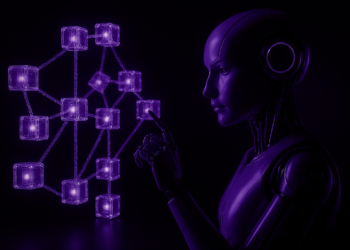APIs are often perceived as abstract technical tools, distant from the core of an organization. However, this view overlooks their true significance. APIs are not just endpoints or protocols; they are a direct reflection of the organization’s internal dynamics. They are shaped by the people, the workflows, and the values that drive the organization. Through APIs, we see how teams collaborate, how priorities are set, and how the organization engages with the outside world.
The truth is: the API is not “there.” We are the API. This article explores this mindset shift and its implications for how we design, build, and think about APIs in modern organizations.
1. APIs: The Organization’s Digital Mirror
APIs are not built in a vacuum. They are deeply influenced by the teams, workflows, and values of the organizations that create them. Just as a product reflects the priorities of its creators, an API reveals the underlying strengths and weaknesses of the organization.La culture façonne les APIs
Culture Shapes APIs
- Collaborative cultures produce APIs that are intuitive, scalable, and user-friendly. These organizations emphasize open communication and shared goals, ensuring that APIs serve both internal and external needs effectively.
- Siloed organizations, on the other hand, often produce fragmented APIs. For instance, a financial institution might have different APIs for credit card and mortgage services, but due to poor collaboration between teams, these APIs lack a unified design, creating inefficiencies and frustration for developers integrating them.
Processes Define API Quality
An organization’s development processes significantly influence API quality:
- Agile, iterative workflows enable APIs to evolve rapidly, adapting to user feedback and changing requirements. For example, Spotify’s iterative approach to API design ensures its developer community is engaged and its APIs remain relevant.
- Rigid, waterfall processes, however, often result in APIs that are outdated upon delivery, lacking the flexibility to meet dynamic demands.
Priorities Drive API Design
APIs reflect what matters most to an organization. A company that prioritizes developer experience will invest in intuitive design, clear documentation, and robust support. Stripe, for instance, has built its reputation on providing APIs with exceptional developer experience, driving widespread adoption. Conversely, organizations focused solely on speed may cut corners, leading to poorly designed APIs that harm long-term trust.
In short, APIs are the digital mirrors of an organization’s culture, processes, and priorities.
2. The Human Element of APIs
At their core, APIs are not just technical solutions—they are human creations. Every decision in the API lifecycle, from design to deployment, involves people. Recognizing the human element is key to building successful APIs.
Empathy for API Consumers
The best APIs are built with empathy. Understanding the needs of API consumers—whether they are internal developers, external partners, or end-users—is critical. Empathy drives design choices that:
- Simplify integration.
- Anticipate pain points.
- Solve real problems.
Empathetic APIs go beyond functionality; they delight users and foster trust. Consider Twilio, which has gained developer loyalty by focusing on easy-to-use APIs and offering clear, actionable error messages.
Collaboration Across Teams
APIs often act as bridges between teams, departments, or even organizations. Their success depends on cross-functional collaboration:
- Product managers ensure APIs align with business goals.
- Architects provide scalable and robust designs.
- Developers focus on implementation and usability.
- Marketers and sales teams help communicate the API’s value to partners and customers.
An example of this is Amazon’s “two-pizza teams,” which prioritize small, cross-functional groups working together to design APIs that serve both technical and business needs.
Ownership and Accountability
An API’s quality is directly tied to the ownership taken by its team. APIs are not one-off projects—they are living products that require continuous care. For example, Netflix’s teams take end-to-end responsibility for their APIs, monitoring performance, iterating on feedback, and ensuring long-term reliability.
3. APIs as the Voice of the Organization
An API is more than a tool; it is the voice of the organization in the digital ecosystem. Every interaction with an API is a conversation between the business and its partners, customers, or developers.
Design as a Communication Tool
API design is the language of this conversation. A well-designed API communicates:
- Clarity: Clear documentation and consistent naming conventions make the API easy to understand.
- Intent: Thoughtful design choices signal that the organization values the user’s time and effort.
- Adaptability: Flexible APIs demonstrate a commitment to evolving with user needs.
For instance, OpenAI’s API for GPT models showcases clarity and adaptability, allowing businesses to integrate advanced AI capabilities seamlessly.
APIs as Relationship Builders
In today’s interconnected world, APIs play a central role in forming partnerships and ecosystems. A robust API can:
- Strengthen collaborations with third-party developers.
- Enable seamless integration with partner systems.
- Extend the organization’s reach into new markets.
Google Maps API, for example, has become a cornerstone of countless businesses, from ride-sharing apps to e-commerce platforms, demonstrating how APIs can create mutually beneficial ecosystems.
4. The Mindset Shift: “We Are the API”
Embracing the idea that “we are the API” transforms how organizations approach API development. It shifts the focus from technical outputs to strategic outcomes.
From Outputs to Outcomes
Success is not measured by the number of APIs delivered but by the value they create. Metrics like:
- Developer satisfaction.
- Time-to-integration.
- Business impact.
help organizations align APIs with their broader goals.
From Silos to Synergy
Breaking down silos is essential. Teams must work together to ensure APIs align with a shared vision and strategy. For example, Salesforce integrates its APIs into a unified ecosystem, enabling developers to build holistic solutions.
5. Building APIs with Purpose
To fully embody the ‘We are the API’ philosophy, organisations must adopt deliberate practices:
- Encouraging cross-functional collaboration
- Prioritise the Developer Experience (DX)
- Adopt Continuous Improvement
- Promote Ownership and Responsibility
- Aligning APIs with organisational values
6. The Future of APIs: People-Centric and Purpose-Driven
The future of APIs lies in combining technical excellence with human-centric design. Trends like AI-powered APIs and decentralized ecosystems will further elevate their importance, but the guiding principle remains the same: APIs must serve people.
Organizations that embrace the mindset of “we are the API” will lead the way, creating interfaces that are not only technically robust but also strategically impactful.
The API is not just a technical construct—it is a reflection of us. It embodies our decisions, collaboration, and vision. By adopting the mindset that we are the API, organizations can elevate their approach to API development, creating interfaces that drive innovation, foster relationships, and deliver lasting value.
So, the next time someone asks, “Where’s the API?” remind them: The API is not there; it’s here—within our teams, culture, and aspirations.
A collaborative culture encourages user-friendly, scalable and well-documented APIs. Conversely, a siloed culture can produce disconnected APIs, creating inefficiencies. Culture also determines an organisation’s ability to align teams around common goals when creating APIs.
An API aligned with an organisation’s values reflects its mission and priorities. For example, a company focused on innovation will invest in adaptable and well-documented APIs, showing that it values user experience and long-term impact.
A well-designed API facilitates seamless integrations with partner systems, encourages collaboration and opens up opportunities in new markets. For example, the Google Maps API has become essential to thousands of businesses, creating a mutually beneficial ecosystem of partners.












